Autumn is here and it is a great time to fish! There are still many of the summer species left and the winter species have started to move in too. The fish are feeding up getting ready for the winter and are still greedily snapping at lures. However if there is one thing that is likely to throw a spanner in the works it is the good old British weather!
Wind and ultra-light lures are not the best partners and being as that is one of the main features of autumn then it can make life really hard. However all is not lost as there are a few techniques and venues we can use to our advantage when the elements turn against you.
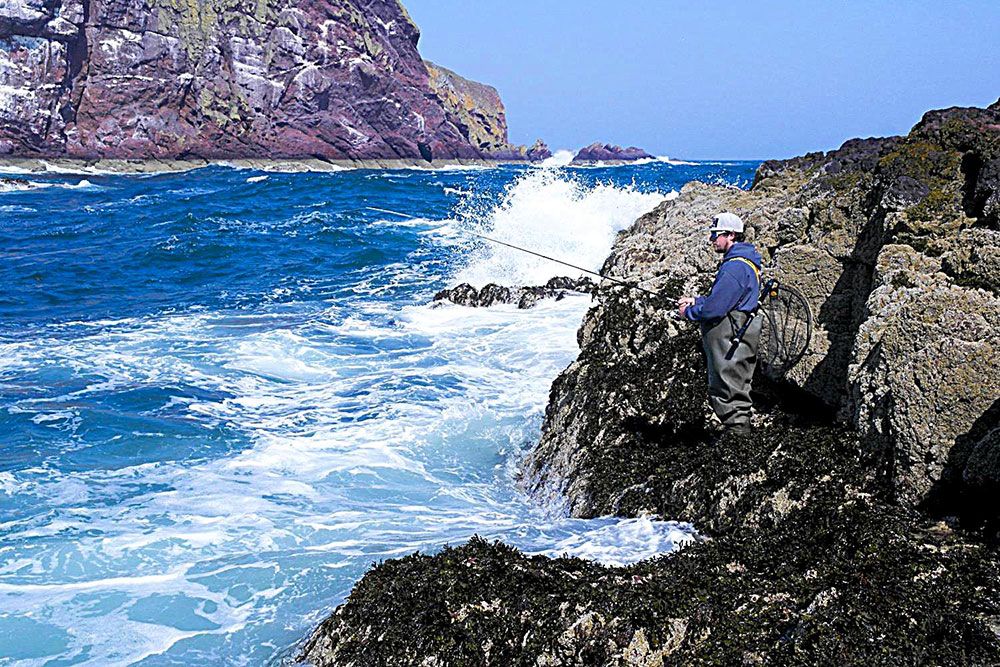
Tackle
In the strictest sense LRF rods are up to 7g casting weight with a line rating of up to a PE0.6 with most between 7 and 8 foot in length. They don’t allow us to step up the weight of the lure / rig beyond 7 grams to counteract the wind. However one major change we can make is with our main line.
As a mainline in the wind, light fluorocarbon line can give you a real advantage over braid. The line sinks and is heavier than braid. This means the wind will not catch the line so much and consequently lift your lure up out of the water. It has the same refractive index as water which means that it is invisible to fish as well as giving excellent abrasion resistance. Even though it can be a great line to use in the wind it does not have the sensitivity of braid. It can also be a springy line that can be hard to manage on the spool. To compensate for this it is best to use breaking strains below 4lb as these smaller diameters are easier to control. As it is not as sensitive it is best paired with a rod that has a fine sensitive tip, such as a solid tipped rod. This will help you see bites where you don’t have to rely so much on feel. The soft sensitive tip, such as the ones found on the HTO Hyper Sniper S, will show bites with the fish feeling barley any resistance. This can help them suck the bait in and makes bites from even very small fish visually obvious.
Using fluro mainlines generally means using a lighter breaking strain than braid, but even a 3lb fluro on balanced tackle will allow you to land large fish. This is especially true when fishing harbours or anywhere that you can fight the fish in a straight up and down fight. Harbours whilst having a lot of structure to fish are not as snaggy as rock marks and kelp beds, where a higher breaking strain would be required.
Lures
There are lures and techniques that work well in windy weather and I like those that are quick to rig and easy to adapt to changing conditions. The rigs and lures that I will highlight can help beat the elements. They are effective for casting even in a headwind as well as being able to be used straight down a harbour wall. Having this versatility can be the key to catching and not catching. Although many fish can be caught directly below your rod tip, it also pays to have the ability to make long casts and these rigs and lures can achieve just that.
Metals
For much of the summer my metal lures have been getting used a lot and there is no reason to change it now!
Small metal lures such as HTO Shore Jigs, Hart Bony, spoons and blade baits / cicadas are great when it is rough or windy. They are generally compact and aerodynamic, and cast well even into a headwind. They are also a stable lure to use in rough or windy conditions.
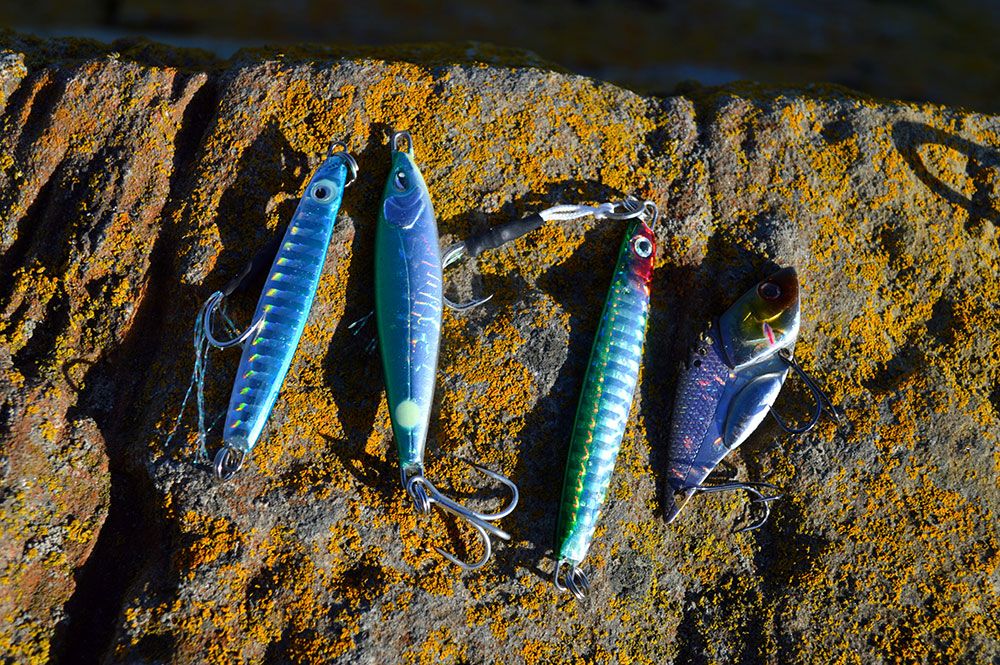
Drop shot
For working the sea bed and bottom of the water column whilst still maintaining a finesse approach, then drop shot is my go to method. Dropshotting allows me to use weights at the top of the rods casting range but still get the same effect as if I was using a small jig head. Add to this the fact that it is a streamlined rig that can be cast into the wind effectively and it’s perfect for those windy days.
When it’s windy I go straight for the drop shot weight at the top of my rods casting range, in my case 7grams. Hook sizes vary but for mini species I use anything from a size 12 down to an 8 and if I suspect there are bigger fish present then I will use up to a size 2. Short shank wide gape patterns such as the Sabpolo Wormer are great for nose hooking lures. Whilst I like a longer shank pattern such as an Tronixpro Aberdeen for rigging worm lures like Isome or gulp.
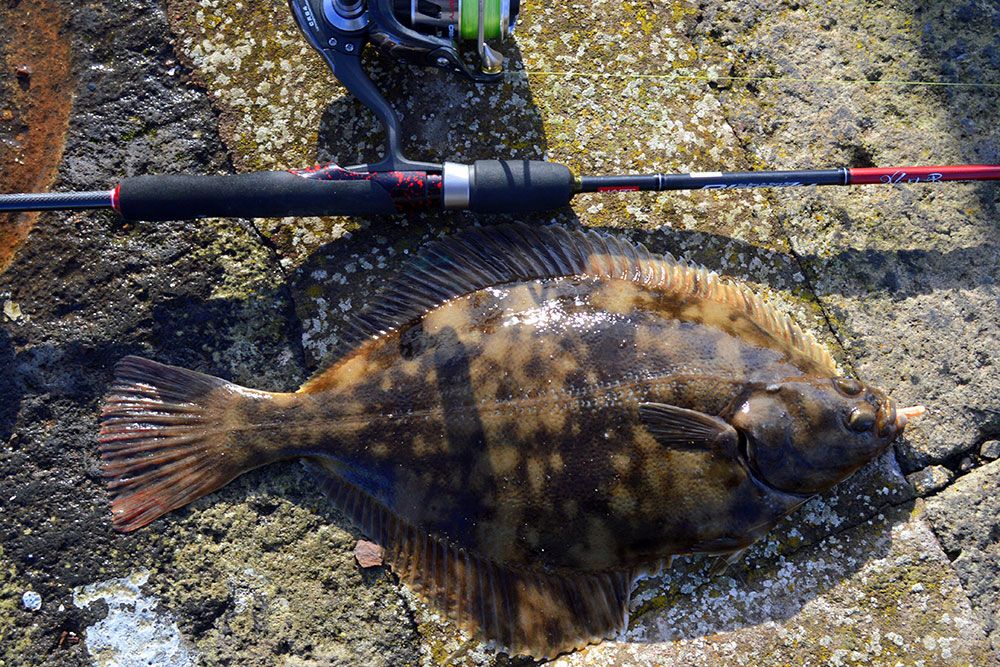
Caro
Whilst dropshotting and using metals can see you being able to work the bottom and other layers of the water column, there are times when a very slowly falling lure can be all the fish will take. However due to the wind, using very light jig heads makes it near impossible to control the lure let alone cast with it. Using a Caro rig is one of the easiest ways of fishing very small lures and jig heads when its windy. The techniques of using a HTO Bombarda or controller float to work a small soft plastic like a red gill eel for bass has been around for years. The Caro rig is the refined Japanese version designed for use with LRF gear.
The Caro (or bombarda) is the main weighted part of the rig and Caro’s are designed to float or sink at a certain rate. Like the drop shot rig they allow you to use weights at the top end of the rods casting range and still get the same effect as using a weightless / lightly weighted lure. By using very slow sinking models you can achieve a very slow fall rate, perfect for getting those on the drop takes.
The mainline is threaded through the Caro and a small bead is threaded on before attaching to a small swivel. Then you can tie a fluorocarbon leader to the swivel to which you can tie your chosen lure. Leader length can be as long as you want it and I have used leaders a lot longer than the rod before. However it can take a bit of practice to cast. If you are new to the technique keep the leader no longer than the rod you are using for ease of casting.
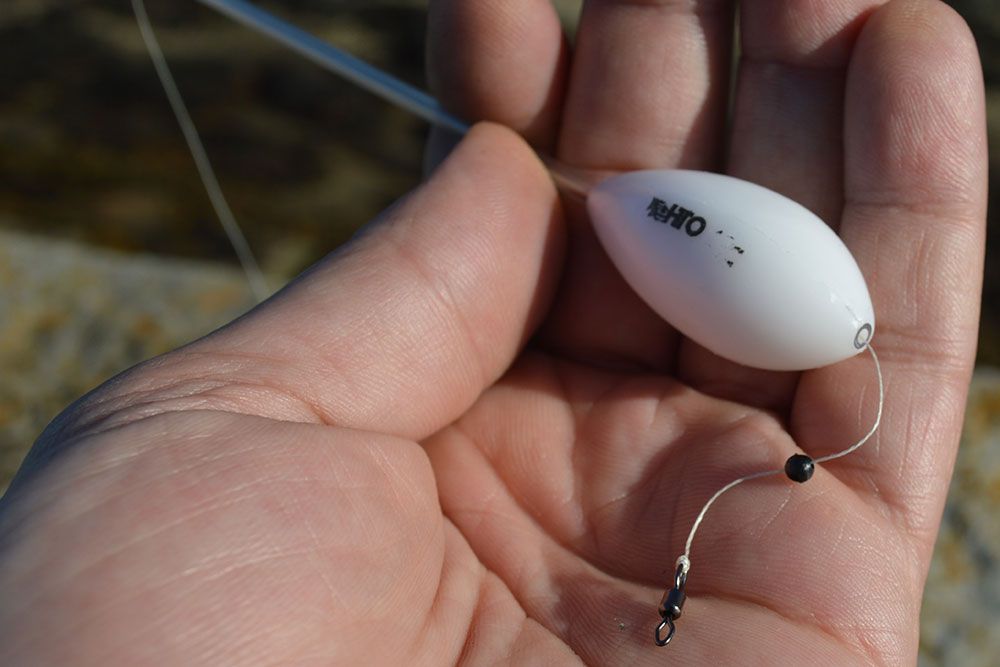
As line is free flowing through the caro, similar to a sliding float, it means that fish can suck in the lure without feeling resistance from the Caro. This makes it great for catching fish like scad and herring that can suck in a lure and spit it out very quickly if it feels resistance.
They work very well with a straight retrieve too and simply by changing the speed of the retrieve you can alter the depth the lure works.
Many lure patterns will work with Caro’s and it is worth experimenting with different shapes and sizes. I personally find “noodle” type lures, slugs and tiny paddle tails very effective when used with the Caro.
You can rig the lures weightless on a plain hook or with a small piece of shot or jig head to get a slow sink on the lure. It can be a fantastic method to target fish that hunt the surface and midwater layers, such as bass, scad, herring, mackerel and garfish etc.
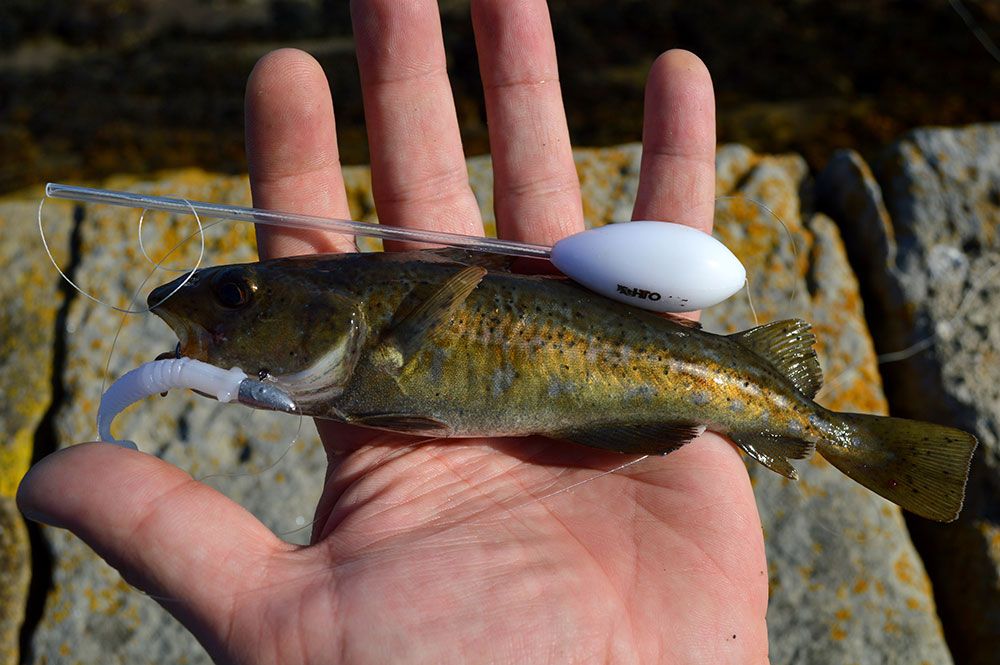
Venues
Throughout the calmer weather I have been concentrating on open coast rock marks for most of my sport. But when the sea state gets too rough I automatically turn to my local harbours and breakwaters. These offer shelter from the rough weather for the angler but also for the fish! The enclosed nature of harbours or marinas provides structure and cover for the fish to hide in and it’s not just small fish that make harbours their home. Wherever you get small fish there will be bigger fish looking to eat them, predators like bass and pollack will swim into the harbours looking to capitalise on the sheltering baitfish.
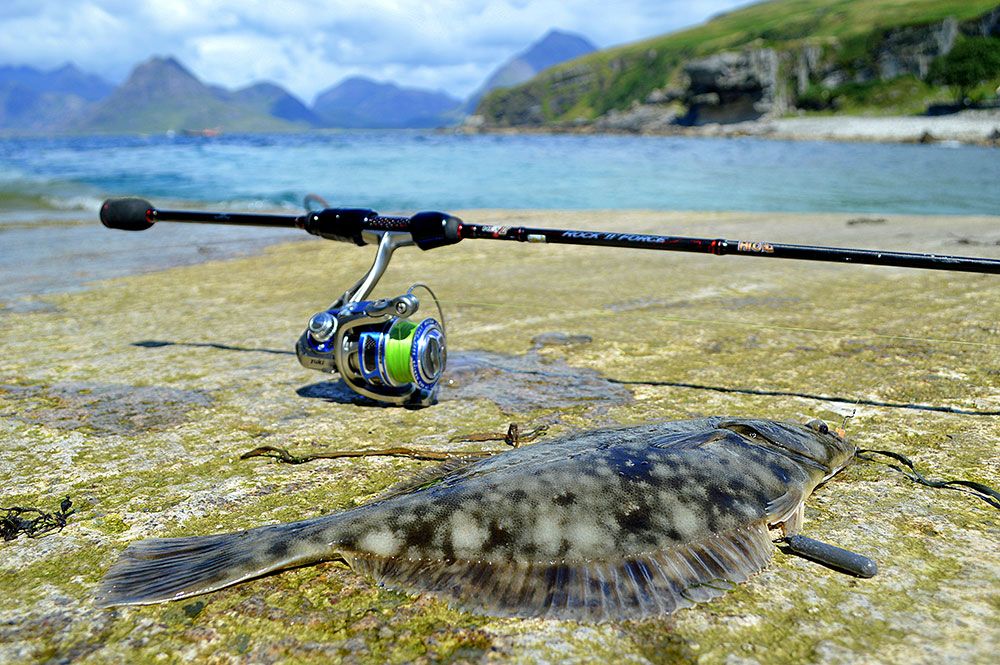
Fishing under the rod tip against harbour walls and under pontoons can see you into a host of species, some small, some big but always fun to catch on light gear. However, even inside sheltered harbours it can be hard to escape the effects of the wind. Getting closer to the water will help a great deal as there is less line between the rod tip and the water for the wind to catch. Targeting floating pontoons and steps down to the water can help negate the effects of the wind by getting you closer to the water. But if that is not possible then Caro rigs, Dropshotting and metal lures can alleviate the effects of strong wind and keep you fishing.
This article first appeared in Sea Angler Magazine. To read Jake’s latest adventures check out Sea Angler Magazine which goes on sale the fourth Thursday of each month.


